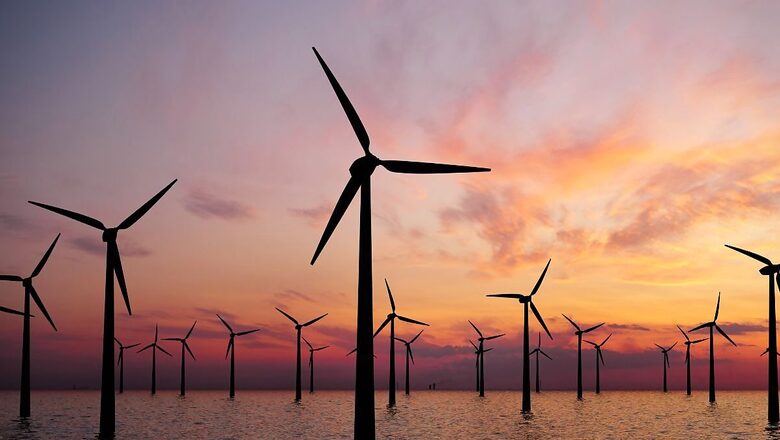
views
After long deliberations, the Centre has notified the offshore wind energy lease rules, taking a significant step forward towards tapping into the potential of offshore wind energy in India. The latest notification lays the groundwork for the next stage with the ministry set to invite tenders for leasing the seabed areas soon.
The rules specify that all the offshore wind energy sites will be exclusively provided by the government, and no person/entity can install offshore wind energy projects or offshore transmission projects, except under a lease granted under these rules. The ministry of new and renewable energy will identify the area for the lease after a wind resource assessment and marine spatial planning. However, clearances from several ministries, including Defence, Home Affairs, External Affairs, Environment, Space and Ministry of Ports, Shipping and Waterways will have to be obtained before granting of the lease.
The government is expected to float the tenders for India’s first offshore wind seabed lease soon. But the offshore wind projects are expected to take several years before they are commissioned. “Initial installations are anticipated around 2030 due to the heightened costs and complexities involved. Offshore wind projects face challenges due to their sensitive nature, necessitating clearances from several ministries,” says Binit Das, Program Manager, (Renewable Energy), at Centre for Science and Environment (CSE).
According to the rules, the lease will be valid for a period of three years for resource measurement and related study/survey activities, which can be further extended to an additional two years. However, the lease will expire after five years and all clearances will be withdrawn, unless the lessee has started work to set up wind energy capacity as per the terms of the lease.
However, for the purpose of construction and operation of offshore wind energy projects, the lease can be extended for 35 years which can be stretched further on a case-to-case basis subject to functional viability and safety of the project. The area covered under a lease will generally be 25 sqkm to 500 sqkm but it can vary depending on the size of the project.
Offshore wind turbines are much larger in size, and cost higher than the onshore wind turbines. The geophysical surveys will encompass physical examination of the water column and seabed conditions to help design the foundations structures for such offshore wind turbines, while the geotechnical surveys will include drilling of bore-holes to determine the soil conditions and its load-bearing capacity to set up the offshore wind projects.
Even though the government notified the ‘Offshore Wind Energy Policy’ in October 2015, there is no offshore wind power capacity under commissioning in India till date.
Earlier this year, power minister RK Singh told Parliament that the ministry has identified potential offshore wind zones off the coast of Gujarat and Tamil Nadu for the initial phase of developments. The National Institute of Wind Energy (NIWE) had also installed a LiDAR off the coast of Gujarat in 2017 and collected two years’ wind data. Geo-physical Survey for 365 Sq. km (Gujarat) for 1.0 GW project capacity in Gujarat has been completed. Geotechnical study at three bore hole locations and Rapid EIA (Environmental Impact Assessment) study for installation and commissioning of a LiDAR off Tamil Nadu coast has also been completed. The ministry also issued a ‘Strategy Paper for Establishment of Offshore Wind Energy Projects’ in July, 2022 indicating various development models.


















Comments
0 comment